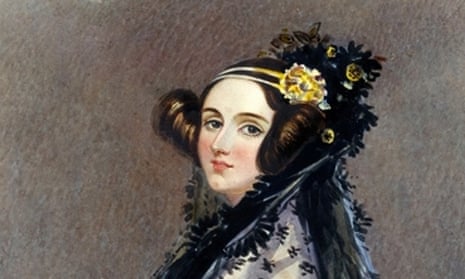In the bowels of London’s Science Museum, Dr Tilly Blyth gingerly opens an envelope. Inside is a lock of long, dark hair tied with a green ribbon. It’s a curiously poignant moment. The lively, intelligent woman to whom it belonged died young, but her mathematical work with computer pioneer Charles Babbage has seen her become a paragon for women in science and technology. Gazing down at the tresses, the centuries seem to shrink away. Ladies and gentlemen, Ada Lovelace is in the room.
It’s an impression Blyth hopes to share. Curator of a new exhibition at the museum opening on “Ada Lovelace day”, she is hoping to breathe life back into the tale of Lord Byron’s daughter in the year of her 200th birthday, bringing together the locks with portraits, letters and artefacts to allow visitors to capture a glimpse of Lovelace “as an individual”.
Others too are keen to support a fresh portrayal. “She was certainly not an angel,” says mathematician Dr Hannah Fry, citing Lovelace’s tempestuous relationships with men, alcohol and gambling. “I think that being perfect isn’t a prerequisite to achieving something,” says Fry, the presenter of a recent BBC documentary about Lovelace, “and I think that it is actually really nice that she is just this very difficult figure.” Furthermore, “the thing that you are contributing doesn’t even have to make a difference,” says Fry, pointing out that although Lovelace’s achievements were “astonishingly impressive”, they had little impact at the time.
Among the items on show is a punch-card operated Jacquard loom of the type that inspired Babbage’s plans for a grand computing machine, the Analytical Engine, as well as a humble marble-covered notebook – Lovelace’s translation of Luigi Menabrea’s seminal 1842 essay on Babbage’s ideas. Her own extensive notes run to more pages that the original article and even contain instructions for the engine. It’s a work that Blyth believes should inspire us to widen our appreciation of the oft-overlooked contributions of translators, communicators and collaborators that, she notes, were often “the kinds of roles that women played at that time”.
Blyth believes the exhibition – an intimate one-roomed show – will also encourage visitors to appreciate Lovelace’s true legacy, which, she says, is not so much her instructions for Babbage’s machine – which was never completed – but something more profound. “I would say what is really more significant is that intellectual leap that she made for considering what the analytical engine could do,” says Blyth. “[Babbage] was thinking about the different simultaneous equations that the engine could calculate but what she saw is [that] this isn’t just about number; it’s about symbol and therefore music and possibly letters – and [the machine] could calculate a whole range of different things.”
Fry agrees: “She was the first published computer programmer but whether she actually came up with the program herself is still debated,” she says. Ultimately, Lovelace’s greatest achievement was even more extraordinary. “She was prophesying the computer age,” says Fry.
The Ada Lovelace exhibition at the Science Museum in London opens on Tuesday, 13 October.
